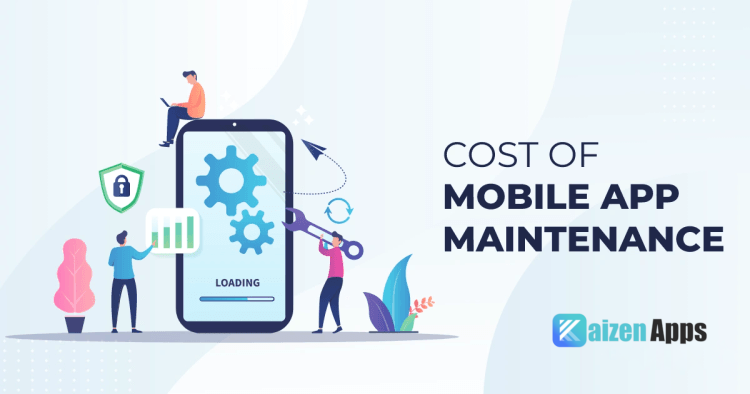Maintaining an app is a crucial aspect of its lifecycle that ensures its longevity, security, and relevance in the market. App maintenance involves various activities, including regular updates, bug fixes, performance improvements, and user support, all of which contribute to the overall cost. In this article, we will explore the different facets of app maintenance, the factors influencing costs, and best practices to manage and reduce these expenses.
Understanding App Maintenance
App maintenance refers to the ongoing process of updating, optimizing, and fixing an application after its initial launch. This process is essential to keep the app functional, secure, and up-to-date with the latest technology trends and user requirements. The primary goals of app maintenance include improving user experience, ensuring security, and adapting to new operating systems and devices.
Types of App Maintenance
There are four main types of app maintenance:
- Corrective Maintenance: Fixing bugs and errors identified by users or through testing.
- Adaptive Maintenance: Updating the app to work with new operating systems, hardware, and software changes.
- Perfective Maintenance: Enhancing existing features and improving performance based on user feedback.
- Preventive Maintenance: Anticipating potential issues and making changes to prevent them.
Factors Influencing App Maintenance Costs
Several factors influence the cost of maintaining an app:
- Platform: The cost varies between iOS and Android platforms due to different development environments and guidelines.
- App Complexity: More complex apps with numerous features and integrations are costlier to maintain.
- Number of Users: Apps with a large user base may require more frequent updates and support.
- Frequency of Updates: Regular updates to add features or improve performance can increase maintenance costs.
Initial Development vs. Maintenance Costs
It’s essential to understand that the initial development cost of an app is often just a fraction of the total expenditure over its lifecycle. Regular maintenance ensures the app remains functional and competitive. Budgeting for maintenance is crucial, as it can range from 15% to 20% of the initial development cost annually.
Breakdown of Maintenance Costs
App maintenance costs can be broken down into several categories:
- Hosting: Costs for server space to host the app.
- Monitoring: Tools and services to monitor app performance and user behavior.
- Updates: Regular updates to enhance features and security.
- Bug Fixes: Identifying and fixing bugs that arise.
- User Support: Providing assistance to users through various support channels.
Regular Updates
Regular updates are vital for maintaining app relevance and performance. They ensure compatibility with new OS versions, improve security, and add new features. The frequency of updates depends on user feedback, technological advancements, and competitive pressure.
Bug Fixes and Performance Improvements
Addressing bugs and performance issues is a continuous process. Common bugs need to be fixed promptly to avoid negative user reviews and potential security risks. Performance improvements, such as optimizing load times and ensuring smooth functionality, enhance user satisfaction.
Security Updates
Security updates are crucial to protect user data and comply with regulations. The cost of security patches can vary based on the app’s complexity and the severity of the vulnerabilities.
Server and Hosting Costs
Hosting costs depend on the type of server (shared, dedicated, cloud) and the app’s traffic. Cloud hosting services like AWS or Google Cloud offer scalable solutions but can be expensive as the user base grows.
Third-Party Services and APIs
Integrating third-party services and APIs can enhance app functionality but often comes with monthly fees. These services may include payment gateways, social media integrations, and analytics tools.
User Support and Customer Service
Providing excellent user support is essential for retaining users. This includes handling user queries, providing technical assistance, and managing feedback. The cost of user support varies based on the level of service provided (basic email support vs. 24/7 live chat).
Design and UI/UX Updates
Regular updates to the app’s design and user experience are necessary to keep it modern and user-friendly. The cost of UI/UX redesigns depends on the extent of changes and the expertise required.
Compliance and Regulatory Updates
Compliance with regulations like GDPR or HIPAA is mandatory for many apps, especially those handling sensitive data. The cost of regulatory updates includes legal consultations and implementing necessary changes.
Monitoring and Analytics
Using monitoring and analytics tools helps track app performance, user behavior, and engagement metrics. These tools can have subscription costs but provide valuable insights for app improvement.
Backup and Data Recovery
Regular backups and data recovery solutions are essential to protect user data and ensure business continuity. The cost of these services depends on the data volume and frequency of backups.
Scalability and Load Management
As the user base grows, scaling the app to handle increased traffic is necessary. This includes load balancers, additional servers, and optimizing the app for performance. The associated costs can be significant but are crucial for maintaining a seamless user experience.
Maintenance for Different Types of Apps
The maintenance costs vary for different types of apps:
- Native Apps: Typically more expensive to maintain due to platform-specific requirements.
- Web Apps: Generally less costly but require regular updates to ensure browser compatibility.
- Hybrid Apps: A mix of web and native, with moderate maintenance costs.
Case Studies
Examining real-world examples can provide insights into app maintenance costs. For instance, a fitness app may have different maintenance requirements and costs compared to a financial services app.
Cost Estimation Techniques
Several methods and tools can help estimate app maintenance costs, including expert consultations, cost calculators, and historical data analysis.
Budgeting for App Maintenance
Creating a maintenance budget involves planning for regular updates, unexpected issues, and user support. It’s crucial to allocate sufficient funds to avoid compromising the app’s performance and user experience.
Hiring Maintenance Teams
Deciding between in-house maintenance teams and outsourcing is critical. In-house teams offer more control but can be expensive, while outsourcing can provide cost savings but may have communication challenges.
Freelancers vs. Agencies
Choosing between freelancers and agencies depends on the app’s maintenance requirements. Freelancers can be more affordable, but agencies offer comprehensive services with diverse expertise.
DIY Maintenance
Some app owners may consider DIY maintenance to save costs. However, this is feasible only for those with technical expertise and the time to manage regular updates and fixes.
Future-Proofing Your App
Implementing strategies to future-proof your app can reduce long-term maintenance costs. This includes using scalable architecture, regular code reviews, and staying updated with technological advancements.
ROI of App Maintenance
Calculating the return on investment (ROI) of app maintenance helps justify the costs. A well-maintained app leads to higher user retention, better reviews, and increased revenue.
Best Practices for Cost-Effective Maintenance
Adopting best practices can make app maintenance more cost-effective. This includes regular code reviews, automated testing, and using reliable third-party services.
Technological Advancements and Their Impact on Maintenance Costs
Advancements in technology, such as AI and automation, can reduce maintenance costs by automating repetitive tasks and identifying issues proactively.
How to Reduce App Maintenance Costs
Practical tips to reduce maintenance costs include optimizing code, minimizing dependencies, and using scalable infrastructure. Regular performance reviews and user feedback also help identify areas for improvement.
Common Mistakes in App Maintenance
Avoiding common mistakes, such as neglecting regular updates or failing to address user feedback, can prevent costly issues and ensure smooth app operation.
FAQs
How often should an app be updated?
Regular updates should be scheduled based on user feedback and technological advancements, typically every 2-4 weeks.
What is the average cost of app maintenance per year?
App maintenance costs can range from 15% to 20% of the initial development cost annually.
How can I reduce the cost of maintaining my app?
Implementing best practices, using automation, and regularly reviewing app performance can help reduce maintenance costs.
Is it better to hire freelancers or an agency for app maintenance?
This depends on your app’s requirements and budget. Agencies offer comprehensive services, while freelancers can be more affordable.
What are the hidden costs of app maintenance?
Hidden costs may include compliance updates, unexpected bug fixes, and user support enhancements.
Can I do app maintenance myself?
DIY maintenance is possible if you have the technical expertise and time. However, complex issues may require professional assistance.
Conclusion
App maintenance is an ongoing investment that ensures your app remains functional, secure, and competitive. Understanding the various costs involved and implementing cost-effective strategies can help manage these expenses efficiently. By prioritizing regular updates, security, and user support, you can enhance user satisfaction and achieve long-term success.

